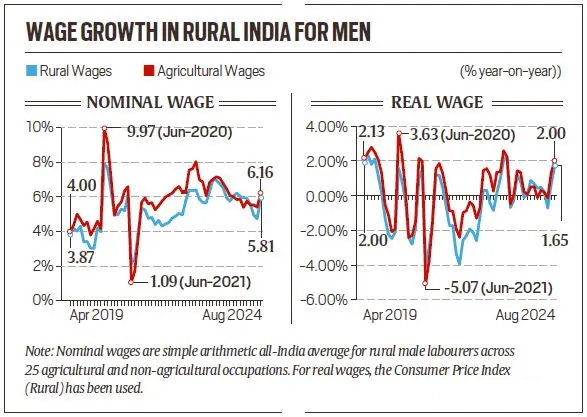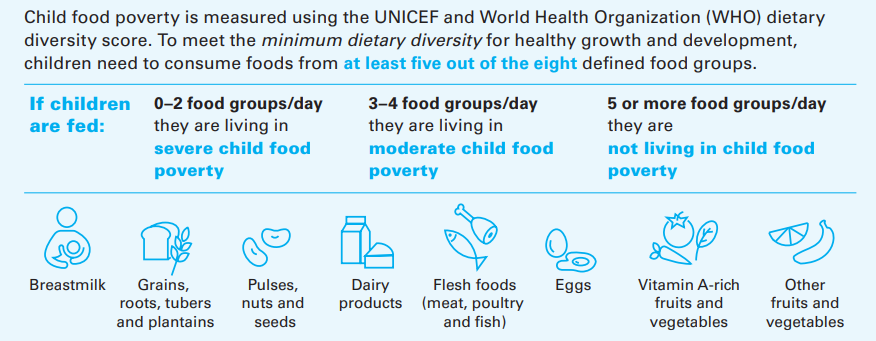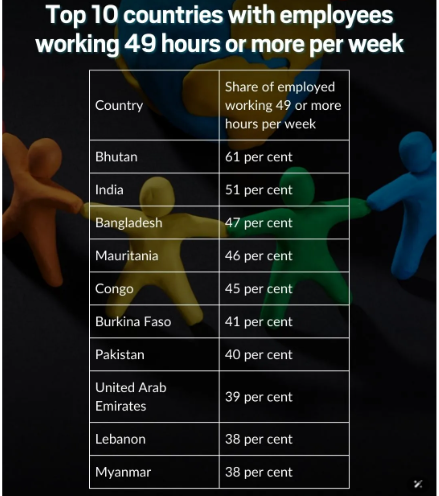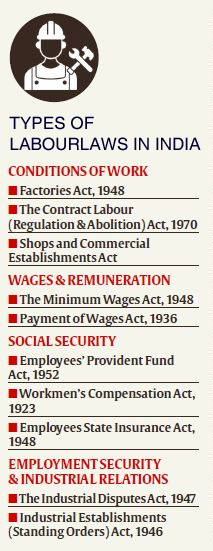Member of Parliament Local Area Development Scheme
For Prelims: Member of Parliament Local Area Development Scheme, Members of parliament, Scheduled Castes, Scheduled Tribes, Mahatma Gandhi National Rural Employment Guarantee Scheme, Khelo India, Comptroller and Auditor General, Supreme Court of India
For Mains: Separation of Powers, Significance of MPLAD Scheme and the Related Issues.
Why in News?
The Member of Parliament Local Area Development Scheme (MPLADS) remains a debated topic in India, with proponents arguing it empowers representatives to address local needs and critics claiming it undermines constitutional principles, particularly the separation of powers.
- Recent reports of incomplete projects and calls for increased funding have further fueled the debate on the oversight and accountability of MPLADS.
What is MPLADS?
- About: MPLADS is a Central Sector Scheme introduced in 1993 that enables the Members of Parliaments (MP) to recommend developmental work in their constituencies with an emphasis on creating durable community assets based on locally felt needs.
- Implementation: A state-level nodal department oversees MPLADS, while district authorities sanction projects, allocate funds, and ensure implementation.
- Funding Allocation: Each MP is allocated Rs 5 crore per year since 2011-12. Funds are disbursed by the Ministry of Statistics and Program Implementation (MoSPI) to district authorities in two instalments of Rs 2.5 crore each.
- Nature of Funds: Funds are non-lapsable and carried forward if not utilised in a given year. MPs must allocate a minimum of 15% and 7.5% of their funds to create assets for Scheduled Castes (SCs) and Scheduled Tribes (STs), respectively.
- Special Provisions: MPs can allocate up to Rs 25 lakh annually outside their constituencies or states for projects promoting national unity. For severe natural calamities, MPs can allocate up to Rs 1 crore for projects anywhere in India.
- Projects Eligible Under MPLADS: MPLADS funds can be converged with the Mahatma Gandhi National Rural Employment Guarantee Scheme (MGNREGS) for durable asset creation and integrated with the Khelo India program for sports infrastructure development.
- Infrastructure support is permitted on lands owned by registered societies or trusts engaged in social welfare for at least three years, but prohibited for societies where the MP or their family members are office-bearers.
What are the Main Arguments For and Against MPLADS?
- Criticisms:
- Violation of Constitutional Principles: Critics argue that MPLADS breaches the separation of powers by allowing legislators to perform executive functions.
- While MPs claim to only recommend projects, there are concerns that district authorities rarely defy MP recommendations, raising questions about accountability and the separation of powers in democratic governance.
- The 2nd Administrative Reforms Commission (ARC) (2005) recommended the abrogation of the scheme, highlighting the problems of the legislator stepping into the shoes of the executive and infringe on the rights of local governments.
- Lack of Accountability: Concerns include inadequate monitoring and evaluation mechanisms, leading to potential misuse of public funds.
- It is widely alleged that MPs use these funds to benefit opinion-makers, contractors, or even family members.
- The MPLADS scheme is not governed by any statutory law, which has made it challenging to enforce the rules and regulations associated with it.
- Political Misuse: Reports suggest that investigations into fund utilisation are often politically motivated, especially during election periods.
- Issues in MPLADS: The Comptroller and Auditor General (CAG) has reported multiple flaws in the scheme's execution:
- Funds under MPLADS are often underutilised, with utilisation rates ranging from 49% to 90%.
- Instead of funding new asset creation, a significant portion of the funds was used for the improvement of existing assets.
- Excess payments and substandard works due to use of lesser materials have been observed.
- Delay in issuing work orders and poor record-keeping have further compounded the issue, raising concerns about transparency and accountability.
- Violation of Constitutional Principles: Critics argue that MPLADS breaches the separation of powers by allowing legislators to perform executive functions.
- Supportive Views:
- Local Development Focus: Supporters, primarily elected representatives, believe MPLADS serves as a tool for localised development, enabling MPs to respond directly to the needs of their communities.
- Flexibility in Project Selection: Elected representatives argue that MPLADS supports faster implementation of projects that reflect local priorities.
- Increased Allocation Demand: Some MPs are advocating for increased MPLADS funding, arguing that the current per capita allocation is lower than what state legislators (Member of the Legislative Assembly) receive for smaller populations.
- It is believed that this increase would enable more equitable development across larger MP constituencies, aligning resources with those available to MLAs.
Supreme Court Stance on MPLADS
- In 2010, the Supreme Court upheld the scheme as constitutional, legitimising MPLADS while emphasising that MPs only recommend projects, which are executed by district officials.
- The SC noted that the scheme has contributed positively to local communities, funding essential developmental works like water facilities, education, health, and infrastructure.
- The SC clarified that the Union government can allocate funds for public welfare schemes through an Appropriation Bill (Article 282 of the Indian Constitution), making the MPLAD Scheme legally valid as part of the public purpose under Directive Principles of State Policy (Article 38).
How Effective is the Monitoring of MPLADS?
- Third-Party Evaluations: The government has attempted to evaluate MPLADS through third-party monitoring. Organisations like National Bank for Agriculture and Rural Development Consultancy Services (NABCONS) and the Agricultural Finance Corporation (AFC) Limited have highlighted some positive outcomes, such as creating good-quality assets and providing decentralised development.
- However, the third-party evaluations also revealed irregularities such as sanction of ineligible works, encroachment of assets, non-existence of some assets, diversion of use of assets, delay in financial sanction and completion of works, and works awarded to ineligible trusts/societies.
- Key Problems in Monitoring MPLADS: Third-party evaluations are often delayed, leaving little room for corrective actions during project execution.
- Insufficient checks and lack of follow-up on irregularities allow misuse of funds.
- Opaque processes and limited public access to fund utilisation data hinder scrutiny.
- Each MP's office has the exact details of the fund utilisation over the last 10 years, but this information has not been updated on the portal as it was supposed to be.
Does MPLADS Require Reform or Abolition?
- Arguments for Reform:
- Reforming the MPLADS could involve giving it statutory backing and establishing an independent monitoring body. This would ensure better governance, accountability, and transparency, addressing concerns about misuse and inefficiency.
- Open tendering can be used for contractor selection, with CAG representatives present to ensure compliance.
- There could be reforms that enable better integration with national schemes like the MGNREGS and Pradhan Mantri-Janjati Adivasi Nyaya Maha Abhiyan (PM-JANMAN) Scheme to maximise the impact of funds.
- The current scheme allows MPs to fund various projects, but reforms could focus on targeting welfare initiatives for marginalised communities to enhance local development.
- Reforming the MPLADS could involve giving it statutory backing and establishing an independent monitoring body. This would ensure better governance, accountability, and transparency, addressing concerns about misuse and inefficiency.
- Arguments for Abolition:
- Abolishing MPLADS could redirect funds directly to local governments (Panchayats, Municipalities), which are better positioned to understand and address the specific needs of the community.
- Many argue that existing government schemes already address local development needs, and abolishing MPLADS could lead to better utilisation of resources and prevent duplication of efforts.
- The weak regulations have led to misuse and uneven distribution of funds, leaving it vulnerable to corruption and inefficiency.
Conclusion
Balancing MPLADS’s development objectives with robust accountability mechanisms could determine its future. Whether reforms to enhance transparency will suffice or whether more drastic measures like abolition are required remains a vital point of debate in India’s democratic governance.
|
Drishti Mains Question: What are the issues associated with the MPLADS scheme? How does it challenge the separation of powers? |
UPSC Civil Services Examination, Previous Year Questions (PYQs)
Prelims
Q. With reference to the funds under Members of Parliament Local Area Development Scheme (MPLADS), which of the following statements are correct? (2020)
- MPLADS funds must be used to create durable assets like physical infrastructure for health, education, etc.
- A specified portion of each MP’s fund must benefit SC/ST populations.
- MPLADS funds are sanctioned on a yearly basis and the unused funds cannot be carried forward to the next year.
- The district authority must inspect at least 10% of all works under implementation every year.
Select the correct answer using the code given below:
a) 1 and 2 only
b) 3 and 4 only
c) 1, 2 and 3 only
d) 1, 2 and 4 only
Ans: (d)
Paradox of Stagnant Rural Wages
For Prelims: Farm Sector, Inflation, Purchasing Power, Labour Bureau, Horticulture, Animal Husbandry, Consumer Price Index, Female Labour Force Participation Rate (LFPR), GDP Growth, Small-Scale Industries, Cottage Industries, MGNREGA, Disposable Income, Nutrition, PM-KISAN, Minimum Wages, High-Quality Seeds, Food Processing.
For Mains: Causes and implications of rural wage stagnation. Ways to address rural wage stagnation.
Why in News?
Recently, the Indian economy and farm sector have grown at an average annual rate of 4.6% and 4.2% respectively from 2019-20 to 2023-24 but it has not led to an increase in rural wages.
- This highlights the paradox of rural wages, where, despite Gross Domestic Product (GDP) growth, wages for workers in both agricultural and non-agricultural sectors have either stagnated or declined.
What is the Current State of Rural Wages?
- Nominal Wages: From April 2019 to August 2024, rural wages grew at an average annual rate of 5.2% nominally (actual amount without adjusting for inflation).
- For agricultural wages specifically, nominal growth was slightly higher at 5.8%, reflecting stronger demand or labour dynamics in agriculture.
- Real Wages: From April 2019 to August 2024, real wage growth (wage adjusted for inflation) for rural workers overall was negative at -0.4%, while agricultural wages posted a modest 0.2% increase.
- This indicates that while wages rose in absolute terms, inflation outpaced these gains, eroding real purchasing power for rural workers.
- Current Fiscal Trends: In the first five months of the 2023-24 fiscal year (April-August), nominal and real growth rates of agricultural wages were at 5.7% and 0.7%, respectively.
Note:
- Data Source: The Labour Bureau compiles daily wage rate data for 25 agricultural and non-agricultural occupations.
- Coverage: The data is gathered from 600 villages across 20 states.
- Occupations Tracked: 25 different occupations including horticulture, animal husbandry, watering/irrigation, and plant protection operations.
- Methodology: Wages are measured both nominally (current values) and in real terms (adjusted for inflation based on the consumer price index for rural India).
What are the Reasons for Stagnation in Rural Wages?
- Higher Female LFPR: The Female Labour Force Participation Rate (LFPR) has seen a substantial increase from 26.4% in 2018-19 to 47.6% in 2023-24.
- The rise in rural female labour force implies more people are willing to work at the same or even lower wage rates, exerting downward pressure on wages.
- Low Agricultural Productivity: Agriculture, especially in rural areas, generally has low marginal productivity. The influx of additional labour does not translate into proportional increases in productivity.
- Capital-Intensive Technology: Technological advancements in various industries are displacing manual labour, reducing the demand for rural non-agricultural jobs. E.g., use of threshing machines and harvesters instead of manual labourers.
- This shift results in higher profits for capital owners but limits wage growth and job creation.
- Decline in Non-Agricultural Labour Demand: Labor-intensive industries, like Fast-Moving Consumer Goods (FMCG) and home appliances, face slower sales and profitability, reinforcing low rural wage growth.
- Sectors that typically absorb rural labour, such as manufacturing and services, have not expanded proportionally with GDP growth.
- Limited Non-Farm Opportunities: Small-scale industries, cottage industries, and rural enterprises, which could generate non-farm jobs, are underdeveloped or lack necessary support and financing.
- Weaker Wage Guarantee Programs: Issues like delayed payments, budget constraints, and corruption in implementation of MGNREGA limit the effectiveness of such programs.
- Inflation: Rising inflation erodes real wages, as nominal wages remain stagnant or grow slowly. Essential commodities, fuel, and other goods have experienced price increases, outpacing wage growth.
- Climate Change: Frequent climate issues like droughts and floods reduce agricultural income, limiting landowners' ability to pay higher wages and creating wage instability in the rural labour market.
What are the Implications of Stagnant Rural Wages?
- Poor Domestic Demand: With the bulk of India's population residing in rural areas, their limited spending power can reduce demand for goods, especially from small and medium enterprises, impacting their viability and slowing the economic growth cycle.
- Financial Vulnerability and Debt: High inflation and stagnant wages push rural households into debt, trapping families in debt cycle, reducing disposable income, and increasing reliance on informal lenders.
- Underemployment: As non-farm job opportunities decline and wages stagnate, many rural workers are forced back into agriculture, even when it is not lucrative.
- Gender Wage Disparity: Rural wage stagnation impacts both men and women, but with women typically earning less than men for the same jobs, the impact of stagnant wages is especially pronounced for rural women.
- Forced Migration: Low wages and limited job opportunities push rural workers to migrate to cities in search of better-paying jobs that lead to overcrowding in urban areas, straining urban infrastructure, housing, and public services.
- Limited Human Capital: Low wages limit access to quality healthcare, education, and nutrition, especially for children, leading to long-term consequences for rural development.
How to Address Rural Wage Stagnation Problem?
- Strengthen Income Transfer Schemes: Expanding and increasing payments in schemes like PM-KISAN and free-grain distribution can ease financial pressures on low-income families.
- Implement Periodic Wage Adjustments: Regularly revising rural minimum wages based on inflation can ensure that wage growth keeps up with living costs.
- Using data from surveys and wage rate studies, such as those by the Labour Bureau, can help policymakers make informed decisions that address rural wage challenges effectively.
- Address Gender Pay Gap: Targeting women and low-income families, like Maharashtra's Ladki Bahin Yojana (Rs 1,500/month for families earning under Rs 2.5 lakh), supports those hit by wage stagnation.
- Rural Non-Farm Employment: Policies should incentivise labour-intensive industries like textiles, food processing, and tourism, while programs like MGNREGA can provide stable employment during economic slowdowns or seasonal unemployment.
- Agricultural Modernization: Enhancing agricultural productivity through better access to technology, irrigation, and high-quality seeds can improve wages by raising output and income per worker in farming.
Conclusion
Rural wage stagnation persists despite strong economic and agricultural growth due to factors like increased labour supply, low agricultural productivity, and limited non-farm opportunities. Addressing this requires a mix of targeted income schemes, wage adjustments, skill development, and agricultural modernisation to foster sustainable wage growth and rural development.
|
Drishti Mains Question: Discuss the reasons behind the stagnation of rural wages in India despite steady economic growth. What measures can be taken to address this issue? |
UPSC Civil Services Examination, Previous Year Question (PYQ)
Prelims
Q.With reference to the Indian economy, demand-pull inflation can be caused/increased by which of the following? (2021)
- Expansionary policies
- Fiscal stimulus
- Inflation-indexing of wages
- Higher purchasing power
- Rising interest rates
Select the correct answer using the code given below:
(a) 1, 2 and 4 only
(b) 3, 4 and 5 only
(c) 1, 2, 3 and 5 only
(d) 1, 2, 3, 4 and 5
Ans: (a)
Q.In a given year in India, official poverty lines are higher in some States than in others because (2019)
(a) poverty rates vary from State to State
(b) price levels vary from State to State
(c) Gross State Product varies from State to State
(d) quality of public distribution varies from State to State
Ans: (b)
Q.Among the following who are eligible to benefit from the “Mahatma Gandhi National Rural Employment Guarantee Act”? (2011)
(a) Adult members of only the scheduled caste and scheduled tribe households
(b) Adult members of below poverty line (BPL) households
(c) Adult members of households of all backward communities
(d) Adult members of any household
Ans: (d)
Mains
Q.“Poverty alleviation programs in India remain mere showpieces until and unless they are backed up by political will.” Discuss with reference to the performance of the major poverty alleviation programmes in India. (2017)
Q.Though there have been several different estimates of poverty in India, all indicate reduction in poverty levels over time. Do you agree? Critically examine with reference to urban and rural poverty indicators. (2015)
India’s Children Lack Dietary Diversity
For Prelims: World Health Organization, National Family Health Survey (NFHS-5), Integrated Child Development Services (ICDS), Public Distribution Systems, Infant and Young Child Feeding (IYCF) practices, UNICEF.
For Mains: Challenges and Recommendations in Achieving Dietary Diversity.
Why in News?
According to a recent study, 77% of children in India aged 6-23 months do not meet the dietary diversity standards recommended by the World Health Organisation (WHO), with the country’s central region having the highest rates of minimum dietary diversity failure.
Minimum Dietary Diversity (MDD)
- It refers to a recommended standard set by the WHO for children aged 6-23 months.
- It suggests that within 24 hours, children should consume foods and beverages from at least five of the eight defined food groups.
- Breast milk, grains, legumes, dairy products, flesh foods, eggs, and fruits and vegetables.
- A child's diet is considered to have failed MDD if they consume food from fewer than five of these food groups.
- MDD is part of the Infant and Young Child Feeding (IYCF) practices, which are assessed by a suite of indicators developed by the WHO and UNICEF. The MDD is also a component of the Minimum Acceptable Diet (MAD) indicator.
What are the Key Highlights of the Study?
- Historical Comparison: Utilising data from the National Family Health Survey (NFHS-5) conducted between 2019 and 2021, researchers noted a decline in the overall failure rate of MDD from 87.4% in NFHS-3 (2005-06).
- Despite some improvement, over 75% of children still lack diverse diets, highlighting an alarmingly high prevalence and ongoing challenges in ensuring adequate nutrition.
- State Variance: The study found that states like Uttar Pradesh, Rajasthan, Gujarat, Maharashtra, and Madhya Pradesh exhibited over 80% inadequacy in dietary diversity, reflecting significant regional disparities.
- In contrast, Sikkim and Meghalaya reported levels below 50%, highlighting successful local nutritional strategies that could be models for other regions.
- Status of WHO Dietary Diversity Standards: According to the study, about 35% of the global child deaths and 11% of the total disease burden are due to inadequate nutrition.
- While in India, 1 in 3 children are underweight and stunted, and 1 in 5 children are wasted.
- Dietary Trends by Food Groups: Certain dietary trends have shown marked improvement.
- Despite these gains, breast milk and dairy consumption declined, with breastmilk dropping from 87% in NFHS-3 to 85% in NFHS-5 and dairy from 54% to 52%.
- Undernutrition and Anaemia: The study emphasises that undernutrition and anaemia are still major health issues. It found that children from rural areas, with illiterate mothers, or mothers with limited access to media and healthcare (such as Anganwadi services) are more likely to have diets lacking diversity.
- Related Recommendations:
- This study underscores the necessity for robust government initiatives to improve child nutrition, such as enhancing the Integrated Child Development Services (ICDS) and Public Distribution Systems.
- The findings suggest that targeted interventions could further reduce the prevalence of dietary deficiencies.
Types of Undernutrition
- Wasting: Low weight-for-height is known as wasting. It occurs when a person has not had enough food to eat and/or they have had an infectious disease.
- Stunting: Low height-for-age is known as stunting. It often occurs due to insufficient calorie intake, leading to a low weight for a given height.
- Underweight: Children with low weight-for-age are known as underweight. A child who is underweight may be stunted, wasted, or both.
What are the Major Challenges in Achieving Dietary Diversity in India?
- Economic and Regional Disparities: High poverty rates and regional inequalities limit access to diverse foods, particularly in central and western states.
- Limited Nutrition Education: A lack of awareness among caregivers, especially in rural areas, reduces understanding of balanced diets, contributing to undernutrition.
- Public Distribution Gaps: The PDS often focuses on staple grains, offering limited variety and missing nutrient-rich foods like legumes, fruits, and vegetables.
- Healthcare Access and Counseling Deficit: Poor access to healthcare facilities and nutrition counseling lacks essential information, affecting children’s dietary choices.
- Social and Cultural Factors: In some communities, dietary choices are influenced by cultural norms that may deprioritize certain food groups, limiting children’s exposure to varied diets.
Related Government Initiatives
Way Forward
- Strengthening Public Distribution System (PDS): Include nutrient-rich foods such as pulses, legumes, and fortified cereals in PDS to improve access to a variety of food groups.
- Expanding Nutrition Education Programs: Implement community-based nutrition education initiatives, especially for mothers, on the importance of diverse diets and meal planning.
- Enhancing ICDS and Anganwadi Services: Intensify efforts to monitor child nutrition, provide counselling, and supply balanced food options through ICDS centers.
- Leveraging Technology and Social Media: Use digital platforms for nutrition awareness campaigns targeting rural and urban areas, focusing on easily accessible dietary diversity practices.
- Promoting Local and Affordable Food Options: Encourage local cultivation and consumption of nutrient-dense foods like pulses, fruits, and vegetables to make dietary diversity more affordable and sustainable.
|
Drishti Mains Question: Discuss the significance of dietary diversity in child development and evaluate government measures to address nutritional challenges in India. |
UPSC Civil Services Examination, Previous Year Question (PYQ)
Prelims:
Q. With reference to National Rural Health Mission, which of the following are the jobs of ‘ASHA’, a trained community health worker? (2012)
- Accompanying women to the health facility for antenatal care checkup
- Using pregnancy test kits for early detection of pregnancy
- Providing information on nutrition and immunization.
- Conducting the delivery of baby
Select the correct answer using the codes given below:
(a) 1, 2 and 3 only
(b) 2 and 4 only
(c) 1 and 3 only
(d) 1, 2, 3 and 4
Ans: (a)
Mains:
Q. There is a growing divergence in the relationship between poverty and hunger in India. The shrinking of social expenditure by the government is forcing the poor to spend more on non-food essential items squeezing their food-budget. Elucidate. (2019)
Workplace Culture of India
For Prelims: ILO, Concurrent List, Code of Wages, 2019, Industrial Relations Code, 2020, Social Security Code, 2020, Occupational Safety, Health and Working Conditions Code, 2020
For Mains: India’s Corporate Culture: Regulatroty Framework, Recommendations and Challenges
Why in News?
The tragic case of Anna Sebastian, a chartered accountant who is reported to have died due to work-related stress, underscores the urgent need to address the toxic workplace culture in India, highlighting the continued exploitation of workers.
Note:
- According to the recent study of International Labour Organisation, India ranks among the most overworked countries globally, with workers averaging 46.7 hours per week.
- Additionally, 51% of India's workforce clocks 49 or more hours weekly, placing the country second in terms of extended working hours worldwide.
What are the Key Issues in India’s Workplace Culture?
- Toxic Work Environment:
- Long working hours and stress have become normalised in many corporations, driven by a relentless focus on profit margins and bottom lines.
- The practice of overworking employees while cutting costs often leads to burnout, as companies justify exploitation with terms like “organisational stretch” and “variable pay.”
- Responses to Work Culture Issues:
- Corporate initiatives like codes of conduct and work-life balance policies often lack depth, failing to address the root causes of workplace toxicity effectively.
- Abusive Leadership and Lack of Accountability:
- The absence of legal recourse for employees facing workplace harassment or abusive language creates an environment where such behaviors can persist unchallenged.
- The performance evaluation systems in many companies are perceived as biased, leading to feelings of unfair treatment among employees, which breeds resentment and a toxic atmosphere.
- Public Sector vs. Private Sector Dynamics:
- Public sector organisations typically offer stronger job security and a more supportive work environment, aided by unions that help address employee grievances.
- This difference raises questions about the need for improved practices within the private sector to foster a healthier work culture.
- Public sector organisations typically offer stronger job security and a more supportive work environment, aided by unions that help address employee grievances.
- Fatalities Linked to Long Working Hours:
- In 2016, WHO and ILO estimated that long working hours contributed to 745,000 deaths due to stroke and ischemic heart disease—a 29% increase since 2000.
- Workers aged 60-79 who consistently worked more than 55 hours per week between ages 45 and 74 exhibited higher mortality rates.
- In 2016, WHO and ILO estimated that long working hours contributed to 745,000 deaths due to stroke and ischemic heart disease—a 29% increase since 2000.
- Link Between GDP and Working Hours:
- ILO reveals that countries with shorter working hours often enjoy higher per capita GDP. Nations like Norway (33.7 hours) and the Netherlands (31.6 hours) maintain shorter working weeks while prioritising worker well-being, which in turn boosts overall economic prosperity.
- In contrast, countries like India and Bhutan have longer working hours but lower per capita income, suggesting that long working hours don’t necessarily equate to economic success.
- ILO reveals that countries with shorter working hours often enjoy higher per capita GDP. Nations like Norway (33.7 hours) and the Netherlands (31.6 hours) maintain shorter working weeks while prioritising worker well-being, which in turn boosts overall economic prosperity.
Workplace Culture in Other Countries
- United States:
- Demanding work culture with long hours, but increasing flexibility (remote work, flexible hours, etc.).
- Focus on performance with bonuses and stock options, but leads to competition and income inequality.
- Stronger legal protections, though labor laws vary by state and unions are weaker in some sectors.
- Europe:
- Strong emphasis on work-life balance with strict labor laws (e.g., 35-hour workweek in France).
- Respectful and collaborative corporate culture with greater employee protections.
- More equitable compensation and generous benefits; robust labor protections and strong unions.
What is the Regulatory Framework Regarding Labours in India?
- Constitutional Framework: Under the Constitution, Labour as a subject is in the Concurrent List and, therefore, both the Central and the State governments are competent to enact legislations subject to certain matters being reserved for the Centre.
- Judicial Interpretation: In the case of Randhir Singh vs Union of India,1982, the Supreme Court stated that “Even though the principle of ‘Equal pay for Equal work’ is not defined in the Constitution, it is a goal which is to be achieved through Articles 14, 16 and 39 (c).
- Article 14: It provides for equality before the law or equal protection of the laws within the territory of India.
- Article 16: It talks about the right of equal opportunity in the matters of public employment.
- Article 39(c): It specifies that the economic system should not result in the concentration of wealth and means of production to the detriment of the entire society.
- Legislative Framework: There have been several legislative and administrative initiatives taken by the government to improve working conditions and simplify labour laws. Most recent is the consolidated sets of 4 labour codes which are yet to be implemented.
- Labour Codes:
- The Factories Act, 1948:
- Daily hours under the Factories Act cannot exceed nine hours in any day, according to Section 54.
- Every worker is entitled to an interval break of at least half an hour and not more than 5 hours of work should pass before such interval.
- No worker under the Act shall be required to work for more than 48 hours in any week, according to Section 51.
- Daily hours under the Factories Act cannot exceed nine hours in any day, according to Section 54.
- The Minimum Wages Act, 1948:
- Wages paid for overtime must be double the actual rate for any hour, or part of an hour, of actual work undertaken in excess of the prescribed 9 hours or 48 hours per week.
What can be Done to Improve Work Culture in India?
- Regulatory Framework:
- To effectively address toxic workplace culture, a regulatory framework is necessary. This could involve mandating corporate boards to be accountable for workplace conditions and employee welfare.
- Establishing clear guidelines for employee treatment and performance evaluations can help mitigate abusive practices.
- Cultural Shift in Corporations:
- Companies should actively promote a culture of respect and fairness, where employee contributions are acknowledged and rewarded appropriately.
- Initiatives focused on improving work-life balance, alongside genuine engagement with employees, could help foster a healthier workplace environment.
- Awareness and Advocacy:
- Increased awareness and discourse on workplace culture issues can empower employees to voice their concerns and advocate for their rights.
- Learning from international standards where employees have the right to sue for mental stress could prompt similar protections in India.
- Corporate Social Responsibility (CSR):
- Corporations must integrate a commitment to improving workplace culture into their CSR strategies, recognizing that employee well-being is integral to long-term success.
|
Drishti Mains Question Q.Discuss the key issues surrounding workplace culture in India. What regulatory reforms are necessary to improve employee-employer relations? |
India Joins ARIN-AP Steering Committee
Why in News?
Recently, India, represented by the Directorate of Enforcement (ED), has been included in the Steering Committee of the Asset Recovery Interagency Network-Asia Pacific (ARIN-AP).
- India will assume the presidency of ARIN-AP in 2026 and host the network's Annual General Meeting (AGM).
- This aligns with India’s priorities under the G-20 framework, particularly with respect to the Nine Point Agenda on tackling fugitive economic offenders and asset recovery.
Note:
ED is the premier financial investigation agency mandated with investigation of offences of money laundering and violations of foreign exchange laws.
- It functions under the Department of Revenue of the Ministry of Finance.
What are Key Facts About ARIN-AP?
- About: ARIN-AP is a multi-agency network to exchange information on individuals, companies, and assets in the Asia-Pacific region with the intention of facilitating the pursuit and recovery of proceeds of unlawful activities.
- It is a member of the Global Camden Asset Recovery Inter-agency Network (CARIN).
- Objectives: Focus on the proceeds of all crimes, within the framework of international obligations.
- Form a solid international network with other related organisations such as United Nations Office on Drugs and Crime (UNODC) and CARIN.
- Facilitate and promote training in all aspects of tackling the proceeds of crime.
- To increase the effectiveness of members’ efforts in depriving criminals of their illicit profits by tackling the proceeds of crime
- Membership: It includes 28 member jurisdictions and nine observers to facilitate cross-border collaboration on asset tracing, freezing, and confiscation.
- Secretariat: The Secretariat's role is handled by the Korean Supreme Prosecutors' Office (SPO).
Asset Recovery
- Asset Recovery is the process of tracing, freezing, confiscating and returning funds that have been obtained through illegal means.
- The adoption of “The United Nations Convention against Corruption” (UNCAC) in 2003 enshrined, for the first time, the recovery and repatriation of stolen assets as a fundamental principle of international public law.
- It has firmly established Asset Recovery on the international policy agenda.
What are Key Points Related to CARIN?
- About: CARIN is an informal network or an inter-agency network represented by law enforcement and judicial experts (e.g., prosecutors or judges) from each member state.
- Purpose: It supports the full asset recovery process—from asset tracing to freezing, seizure, management, forfeiture/confiscation, and cross-jurisdictional asset sharing.
- Secretariat: The CARIN permanent Secretariat is based at Europol Headquarters in the Hague.
- Membership: CARIN currently has 61 registered member jurisdictions, including 27 EU Member States and 13 international organisations.
- It is also linked to the other seven regional asset recovery inter-agency networks (ARINs) across the globe.
- Finance: It is funded by the European Union.
- Structure and Communication: Member representatives are designated as "national contact points" and are English-speaking, as English is the network's working language.
- Functioning: The organisation is governed by a Steering Group of nine members and a rotating annual Presidency.
Note:
- A fugitive economic offender is a person against whom an arrest warrant has been issued for committing an offence listed in the Fugitive Economic Offenders Act, 2018 and the value of the offence is at least Rs. 100 crores.
UPSC Civil Services Examination, Previous Year Question (PYQ)
Prelims
Q.Consider the following statements: (2019)
- The United Nations Convention against Corruption (UNCAC) has a ‘Protocol against the Smuggling of Migrants by Land, Sea and Air’.
- The UNCAC is the ever-first legally binding global anti-corruption instrument.
- A highlight of the United Nations Convention against Transnational Organized Crime (UNTOC) is the inclusion of a specific chapter aimed at returning assets to their rightful owners from whom they had been taken illicitly.
- The United Nations Office on Drugs and Crime (UNODC) is mandated by its member States to assist in the implementation of both UNCAC and UNTOC.
Which of the statements given above are correct?
(a) 1 and 3 only
(b) 2, 3 and 4 only
(c) 2 and 4 only
(d) 1, 2, 3 and 4
Ans: (c)
Geoengineering to Combat Global Warming
Why in News?
A recent study proposes that spraying millions of tonnes of diamond dust annually into the Earth’s upper atmosphere could lower the planet's temperature by 1.6°C, helping to mitigate global warming.
- This geoengineering approach suggests that diamonds could be more effective for Solar Radiation Management (SRM) than materials previously considered.
Current Scenario of Climate Change & Global Warming
- Global temperatures are now approximately 1.2°C above pre-industrial levels (1850–1900) and are projected to reach 1.45°C in 2023, highlighting the urgent need for innovative solutions.
- Current trends suggest that the 1.5°C warming limit established by the 2015 Paris Agreement is unlikely to be achieved.
- Achieving climate targets requires a substantial 43% reduction in emissions from 2019 levels by 2030, though current efforts may yield only a 2% decrease.
What is Geoengineering?
- About:
- It refers to large-scale interventions aimed at altering the Earth's climate system (more specifically solar radiation management) to counteract the effects of global warming.
- Classification: It primarily involves two approaches namely SRM and Carbon Dioxide Removal (CDR).
- SRM: SRM Involves deploying materials in space to reflect solar rays away from the Earth. This method, while still conceptual, draws inspiration from natural phenomena such as volcanic eruptions.
- For example, Mount Pinatubo’s 1991 eruption in the Philippines reportedly reduced Earth’s temperature by 0.5°C that year.
- CDR: Techniques include Carbon Capture and Sequestration (CCS), Direct Air Capture (DAC), and Carbon Capture, Utilisation and Storage (CCUS), with the focus on long-term reduction of atmospheric Carbon dioxide (CO2) levels.
- CCS: It is the main CDR method in practice. It involves capturing CO₂ emissions from industries and storing it underground in suitable geological formations, effectively reducing emissions.
- DAC: It involves extracting CO₂ directly from ambient air using large devices (often called "artificial trees") for storage or use.
- DAC has greater potential benefits as it can address historical CO₂ emissions, though it also faces more significant challenges.
- CCUS: Some captured CO₂ is repurposed in industrial processes, while the remainder is stored.
- SRM: SRM Involves deploying materials in space to reflect solar rays away from the Earth. This method, while still conceptual, draws inspiration from natural phenomena such as volcanic eruptions.
- Related Challenges:
- Implementation Barriers: SRM technologies encounter substantial technological, financial, and ethical challenges.
- Potential unintended effects include disrupted weather patterns, negative impacts on agriculture, and threats to biodiversity.
- Feasibility of CCS: While CCS is presently the most widely implemented geoengineering method, relying solely on it may prove economically impractical compared to shifting toward renewable energy sources.
- Implementation Barriers: SRM technologies encounter substantial technological, financial, and ethical challenges.
UPSC Civil Services Examination, Previous Year Questions (PYQs)
Q1. Which of the following statements is/are correct about the deposits of ‘methane hydrate’? (2019)
- Global warming might trigger the release of methane gas from these deposits.
- Large deposits of ‘methane hydrate’ are found in Arctic Tundra and under the sea floor.
- Methane in atmosphere oxidizes to carbon dioxide after a decade or two.
Select the correct answer using the code given below.
(a) 1 and 2 only
(b) 2 and 3 only
(c) 1 and 3 only
(d) 1, 2 and 3
Ans: (d)
Q. In the context of which of the following do some scientists suggest the use of cirrus cloud thinning technique and the injection of sulphate aerosol into stratosphere? (2019)
(a) Creating the artificial rains in some regions
(b) Reducing the frequency and intensity of tropical cyclones
(c) Reducing the adverse effects of solar wind on the Earth
(d) Reducing the global warming
Ans: (d)
Birth Anniversary of Chittaranjan Das
The Lok Sabha Speaker honored the birth anniversary of Deshbandhu Chittaranjan Das (C.R. Das) on 5th November, 2024.
- CR Das is widely known as Deshbandhu meaning "Friend of the Nation" and "Apostle of Nationalism," as he inspired youth like SC Bose.
- He gained prominence as a barrister by defending Aurobindo Ghose in the Alipore Bomb Case (1908), leading to Aurobindo’s acquittal.
- He also served as defence counsel in the Dacca Conspiracy Case (1910-11).
- He was part of a non-official committee, along with Gandhiji and Motilal Nehru, investigating the Jallianwala Bagh massacre (1919).
- Initially, he sought modifications in the Non-Cooperation programme but later supported it by renouncing his legal practice in 1920.
- He co-founded the Swarajya Party with Motilal Nehru in 1923 to pursue "Non-Cooperation from within the Councils".
- He served as Indian National Congress (INC) President in 1922 at the Gaya session but resigned after his council-entry proposal was defeated.
- His biography, The Life and Times of C.R. Das, was written by Prithwis Chandra Ray.
Balfour Declaration
Recently, the Balfour Declaration completed 107 years which was issued on 2nd November, 1917.
- The Balfour Declaration (named after Arthur James Balfour, British Foreign Secretary) was a public statement issued by the British government during World War I.
- It supported the establishment of a "national home for the Jewish people" in Palestine which was then an Ottoman region with a small Jewish minority population.
- This declaration was issued to ensure Jewish safety amid rising persecution in Europe.
- It conflicted with Britain's prior promise in the McMahon-Hussein correspondence (1915-1916) to support an independent Arab state in return for Arab assistance against the Ottoman Empire.
- Britain sought Jewish support for the Allied powers to influence Jewish communities in the US and Russia, while also viewing control over Palestine as key for protecting the Suez Canal and British interests in India.
Mount Lewotobi
Recently, Mount Lewotobi Laki-Laki volcano, located on the Indonesian island of Flores, erupted.
- This eruption follows heightened volcanic activity in Indonesia, with another recent eruption from Mount Merapi in West Sumatra.
- Indonesia has around 120 active volcanoes and Mt Lewotobi is part of the Pacific Ring of Fire, an area known for frequent seismic and volcanic activity.
- The Pacific Ring of Fire (Circum-Pacific Belt) is a path along the Pacific Ocean characterised by active volcanoes and frequent earthquakes.
- It is largely a result of Tectonic Plates where massive Pacific Plate interacts with less-dense plates surrounding it like Nazca Plate, Juan de Fuca Plate.
Elephant Casualties in Bandhavgarh Tiger Reserve
A group of elephants in Madhya Pradesh's Bandhavgarh Tiger Reserve (BTR) reportedly died from suspected kodo millet poisoning.
According to a 2023 research paper led by National Environmental Engineering Research Institute (NEERI), CSIR, the consumption of kodo millet is often associated with intoxication and poisoning in humans and animals.
- Bandhavgarh Tiger Reserve:
- It is located in the Umaria district of Madhya Pradesh and is spread over the Vindhya hills.
- It holds significant historical importance, evidenced by the presence of the renowned Bandhavgarh Fort, along with numerous caves, rock paintings, and carvings throughout the protected area.
- In 1968, it was designated as a national park and in 1993 was declared a tiger reserve.
- It is known for the Royal Bengal Tigers.
- Other important prey species consist of chital, sambhar, barking deer, nilgai, chinkara, wild pig, chowsingha, langur and rhesus macaque.
- Dependent upon them are the major predators like tiger, leopard, wild dog, wolf and jackal.
- It is located in the Umaria district of Madhya Pradesh and is spread over the Vindhya hills.
- Population of Elephants in India:
- India has the largest number of wild Asian Elephants, estimated at 29,964 according to the 2017 census by Project Elephant.
- Karnataka has the highest number of elephants, followed by Assam and Kerala.
- India has the largest number of wild Asian Elephants, estimated at 29,964 according to the 2017 census by Project Elephant.









